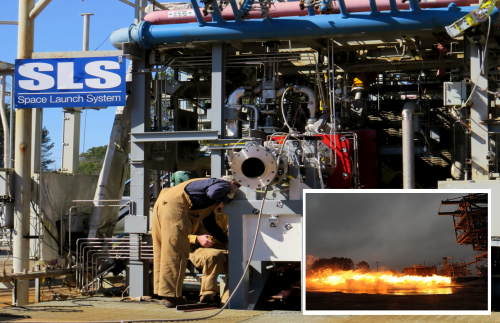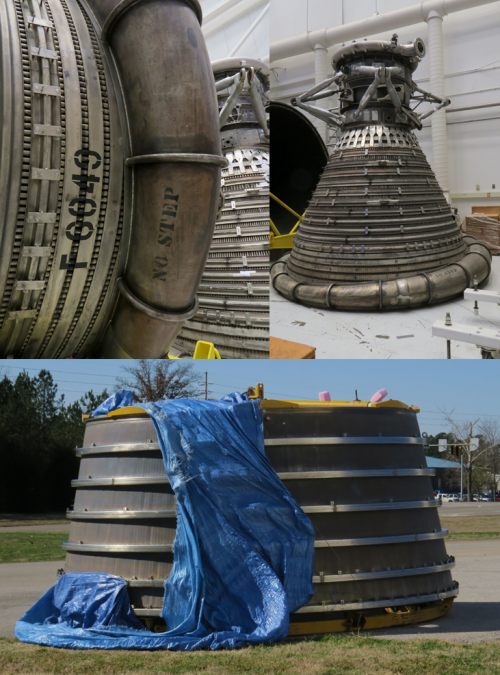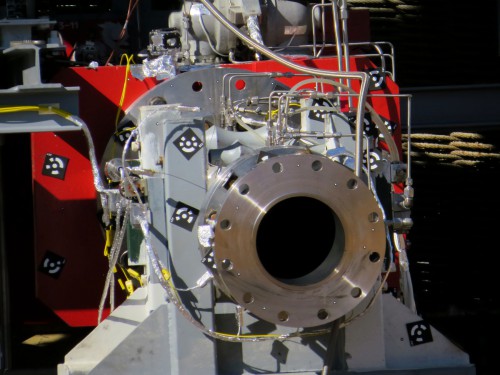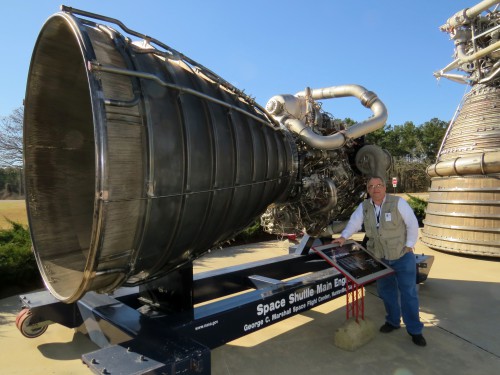
Last January we detailed how engineers at NASA’s Marshall Space Flight Center (MSFC) were testing the venerable F-1 engine’s gas generator to see if it could be used for the space agency’s new heavy-lift booster, the Space Launch System. While at MSFC for another event, we had the opportunity to view and photograph this piece of space flight history.

A total of five F-1 engines powered each Saturn V rocket into its place in history. These massive engines were instrumental in allowing NASA to win the race to the Moon and are now poised to make a comeback—in a major way.
A team of engineers working at NASA’s Marshall Space Flight Center in Huntsville, Ala., studied the venerable F-1 for possible use in NASA’s new heavy-lift Space Launch System, or “SLS.”
Engineers from a wide range of disciplines have broken down components of the monster engine and refurbished them. The secrets gleaned from the engineers’ efforts will be put to use in NASA’s plans to send crews far beyond the orbit of Earth. It is hoped that lessons learned from the F-1 will give rise to advanced and innovative designs.
Researchers dismantled the F-1’s gas generator, which supplies power to the F-1’s turbopump. The gas generator is one of the first components of a rocket’s engine that is designed. The size of the gas generator often dictates the general size of the engine itself.
NASA’s requirements are hefty ones. The space agency’s SLS rocket will need to be capable of hefting 130-metric-ton (143-ton) payloads into orbit.
Two generators were “liberated” from F-1s located at Marshall and at the Smithsonian Air and Space Museum located in Washington, D.C. The parts were cleaned and then scanned to create three-dimensional renderings of the components.
What researchers found was most enlightening: similar components can be more affordably produced using modern machining techniques. Given the poor state of the U.S. economy, this is very welcome news.
Test Stand 116, located at MSFC East Test Area, has roared to fiery life under the refurbished fury of the gas generators.

Dynetics, Inc. and Pratt Whitney Rocketdyne have submitted a proposal to have two F-1 engines used in the SLS Block II design. These are fueled by liquid oxygen and rocket-fuel grade kerosene—not something engineers that worked on the space shuttle’s SSMEs (Space Shuttle Main Engine) are too familiar with, as the SSMEs ran off of liquid oxygen and liquid hydrogen.
A final determination of whether or not SLS will use these systems has yet to be made. Given the history and record of the F-1, a 21st variant could prove to be beneficial for NASA’s new heavy-lift booster.

Want to keep up-to-date with all things space? Be sure to “Like” AmericaSpace on Facebook and follow us on Twitter: @AmericaSpace
Missions » Apollo »




The resurrection of the F-1 for use in the advanced liquid boosters on the SLS would “close-the-loop” historically while enabling the SLS B2 to achieve a greater than 150mt LEO cargo capacity.